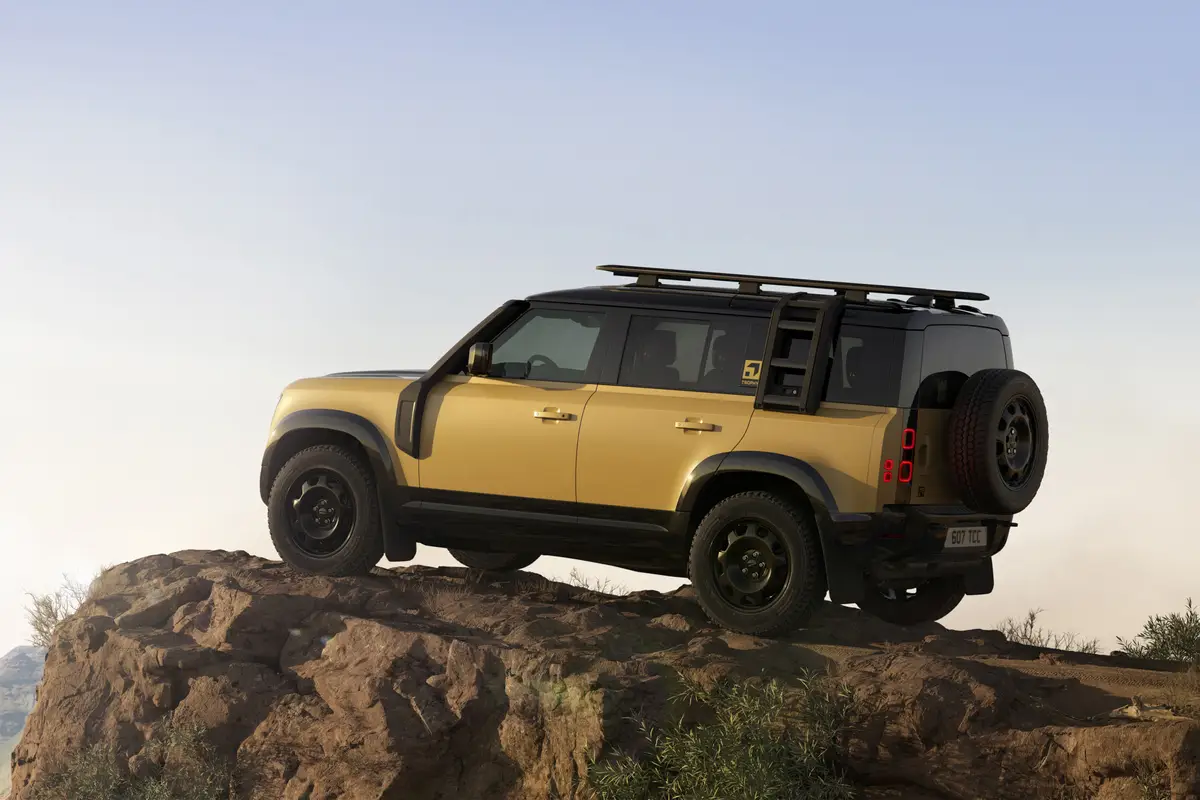Orlando Sentinel's view
Can the Chevrolet Tracker go from worst to first?
The nation’s Chevrolet dealers are just now taking delivery of the 1999 Tracker. It’s still a small sport-utility vehicle, but it has been rebuilt from the wheels to the roof rack.
The redesign, Chevy officials hope, will put the Tracker on equal ground with the Toyota RAV4, Honda CR-V, Kia Sportage and Subaru Forester – recently introduced vehicles that blew the established Tracker into the weeds.
Chevrolet officials came to Orlando last week and let auto writers test the Tracker at Speed World, a race track in east Orlando.
The ’99 Tracker is more aerodynamic and muscular looking and has a stronger engine than its predecessor. It has an improved interior and appears to be screwed together much tighter than previous models.
Like the original, the new Tracker is built for Chevrolet by Suzuki in a plant in Ontario, Canada. But this time around, General Motors didn’t just slap Chevy’s bow tie emblem on the grille. This time, Chevy engineers and designers worked with Suzuki to make sure the new Tracker would have the power, quality, features and styling to compete in what is rapidly becoming a hot segment of the market.
Through October sales of all mini-sport-utilities topped 243,000 – up from 231,000 for the same sales period in 1997, according to Automotive News. But Tracker sales are down nearly 50 percent this year.
Though the Tracker was one of the first small sport-utilities on the market, debuting in 1990, Chevrolet and Suzuki didn’t do much to improve or modify it between ’90 and ’97. As a result, the Tracker didn’t keep up with the competition. Compared with a CR-V or RAV4, the old Tracker seemed tinny, boxy, underpowered and poorly designed in some areas. The very thin doors sounded chintzy when they were slammed; the spare tire mounted on the tailgate blocked vision and the handling was sloppy, particularly on the highway. Heavy winds tended to cause the original Tracker to wander off course.
But the new model should write a different chapter for Chevrolet.
In four-wheel drive mode on an off-road course at Speed World, the ’99 Tracker had no trouble churning through very deep, soft dirt or driving over steep man-made hills. No matter how rough the terrain, the Tracker not only kept on going, but there were no squeaks or rattles and everything worked as it should.
Later, on the road, the new Tracker was reasonably quick, quiet and comfortable. It handled curves deftly, offered good visibility – thanks to the repositioned spare tire – and plenty of room for cargo.
Chevrolet will offer the Tracker in either four-door or two-door convertible body styles with a price range of roughly $15,000-$21,000, which is the same as the ’98 models. But Chevy hopes that this time it won’t need massive rebates and incentives to keep the Tracker moving.
Two-door models come with a 97-horsepower, 1.6-liter overhead cam engine. Four-door models are equipped with a 127-hors epower, 2.0-liter, overhead cam engine with 16 valves. The 2.0-liter engine is optional on two-door Trackers. Buyers can choose from a five-speed stick shift or a four-speed automatic on Trackers with the 2.0-liter engine. The automatic gearbox is not available with the smaller engine. Four-wheel drive is optional on most models.
Unlike other vehicles in this class, the Tracker has a stiff steel frame – just like the rest of Chevy’s sport-utilities – instead of the one-piece body shell called a unibody.
Tracker Brand Manager Rick Scheidt says the steel frame gives the Tracker a quieter ride than other vehicles in the class. Noise is isolated from the interior.
“The suspension provides one level of isolation, and the rubber body mounts between the body and frame provide another,” he said.
Indeed the Tracker is quiet. The new model’s doors are much thicker and heavier than the old Tracker’s thin-skinned doors. That no doubt helps shut out some of the noisef rom the engine a nd the road. But other improvements also give the Tracker more of a refined feel.
Chevy engineers spent considerable time making the seats comfortable. They also gave the Tracker some standard items, such as automatic headlights and a pollen filter in the air conditioning system, that can’t be had on competitive vehicles.
Although the ’99 Tracker is all new and much better, and even though the market is strong for small sport-utilities, success is not guaranteed. The Tracker name doesn’t exactly have a lot of luster, so why keep it?
“We thought about that,” said Scheidt from his office in Detroit. “We went through and looked at the awareness of the Tracker name and found people were well aware of it. But that alone wasn’t enough.”
It takes a long time to get consumers to recognize a new name, Scheidt said. Chevy officials decided that keeping the old name and rolling out a multimillion dollar ad campaign touting the improvements would be the most efficient way to jump-start sales, said Scheidt.
When the Tracker’s TV ads start in January, you’ll see two themes stressed: agility and durability.
Chevy also will try to convey to consumers that the ’99 model is almost as easy to drive as a small car.
“We needed to improve the level of comfort and convenience of the vehicle,” Scheidt said. “We needed to improve ride and handling. Between 40 percent and 70 percent [of Tracker buyers) will be coming from cars.”
Chevy plans to sell about 50,000 Trackers per year – double the amount sold last year. Scheidt believes the market will continue to grow for small sport-utilities.
“No one’s crystal ball is perfect,” he said, “but the concept of the small sport-utility has struck a chord with folks. It gives them the agility of a car and provides function and versatility at an affordable price.”
1999 Chevrolet Tracker
KEY UPGRADES
New 2.0-liter, 16-valve, four-cylinder, overhead cam engine.
Shift-on-the-fly four-wheel drive.
2.4 inches wider.
Two-door model is 6.0 inches longer.
Improved steel frame.
Power rack-and-pinion steering instead of recirculating ball system.
Better front and rear seats.
Additional 2.5 cubic feet of interior storage space.
Improved interior, including more cupholders, armrests in the doors and three-across rear seating.
New instrument panel and ergonomically designed dash.
Latest news



